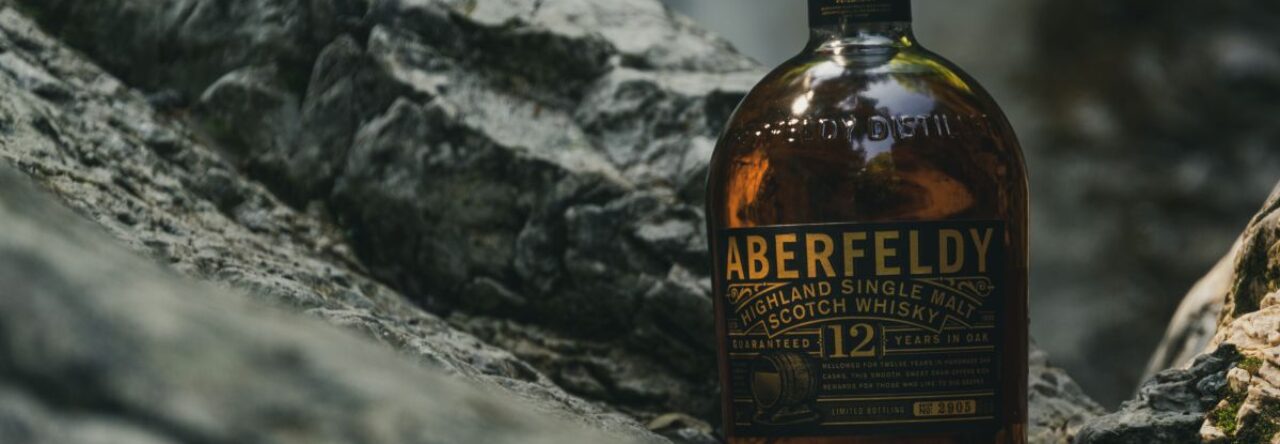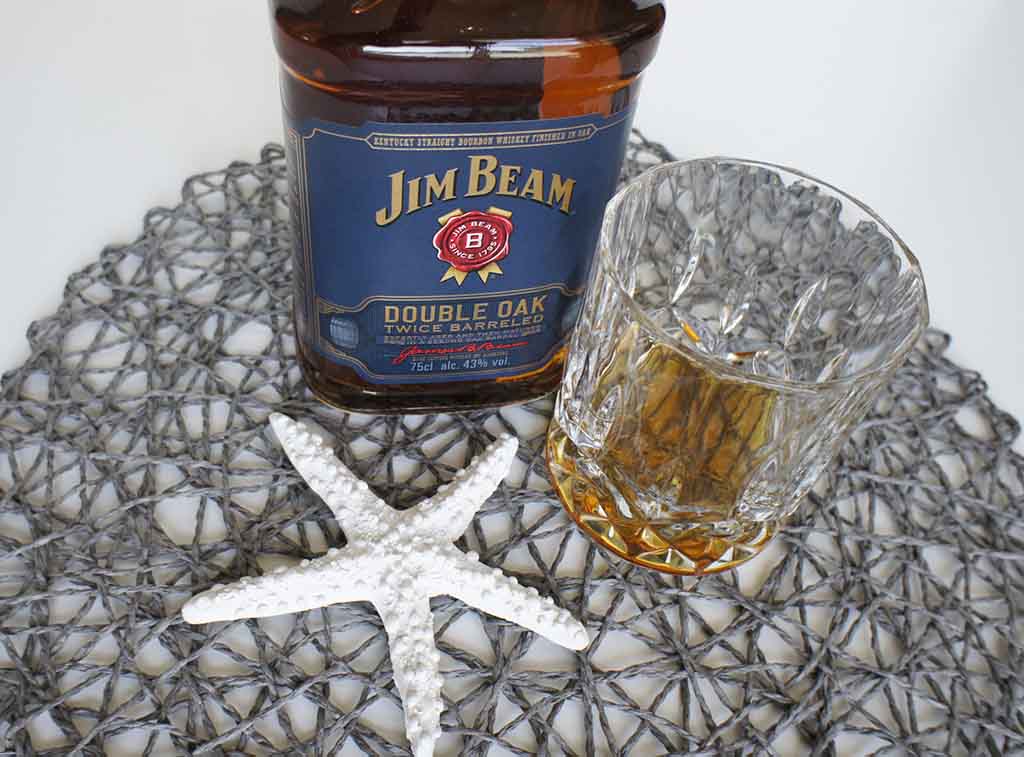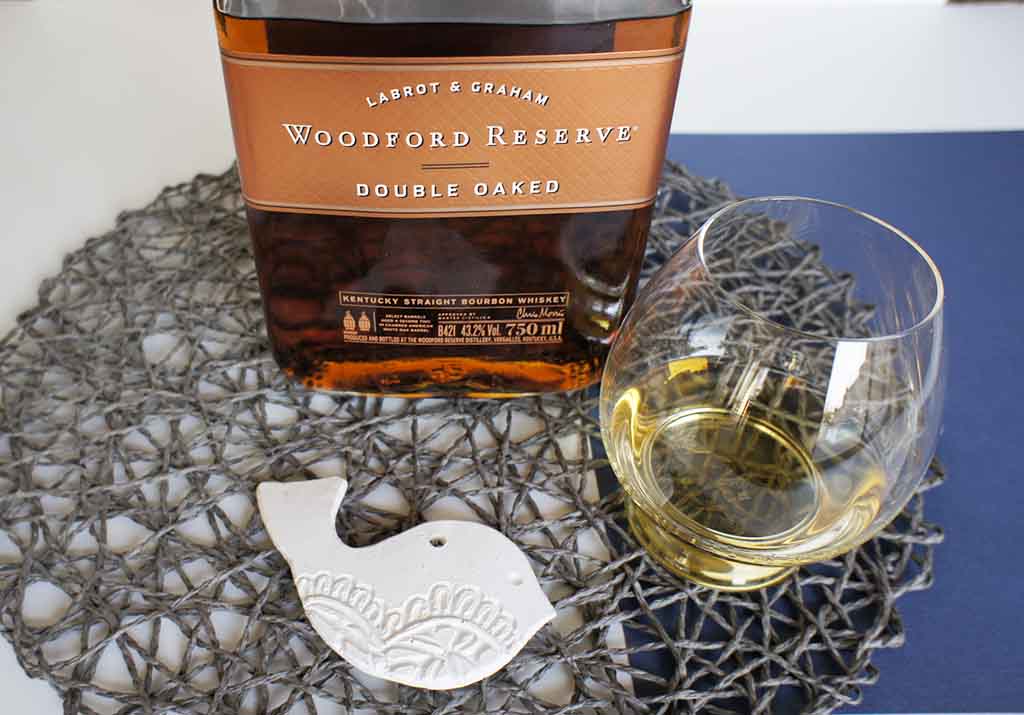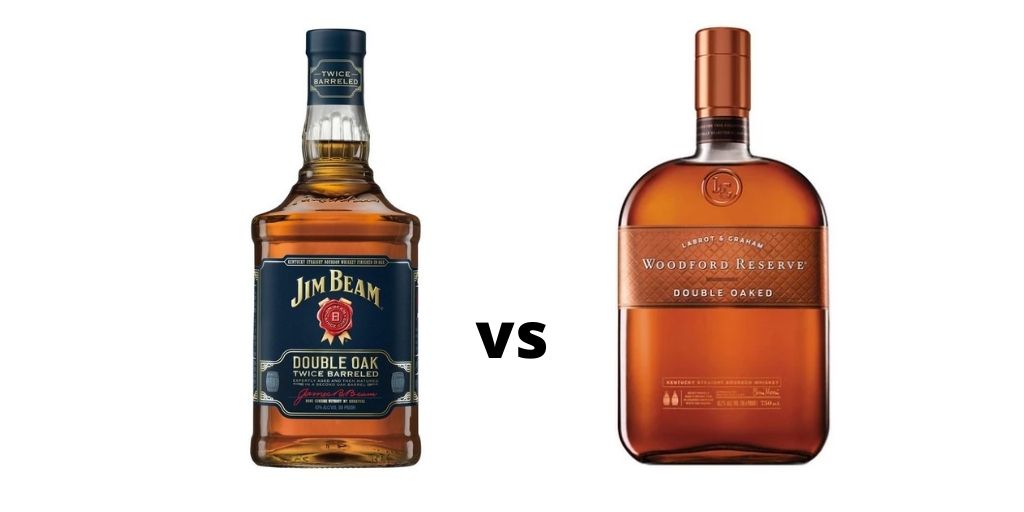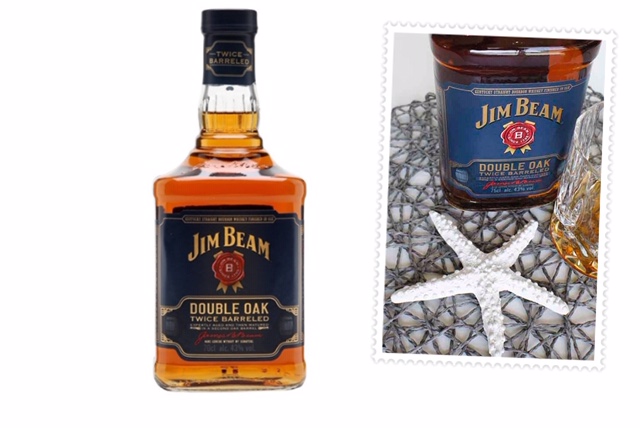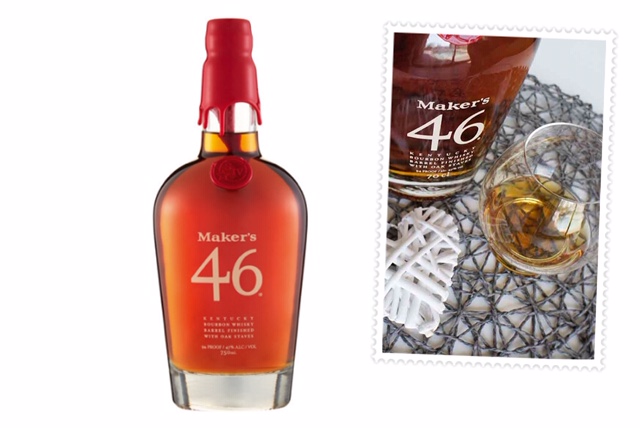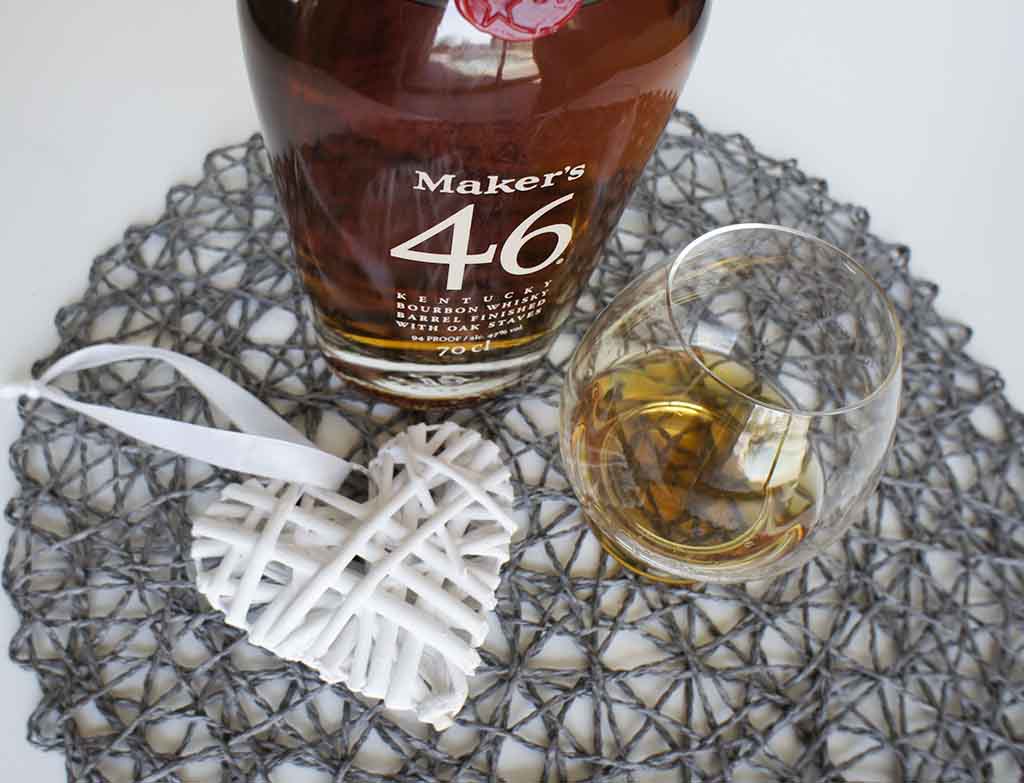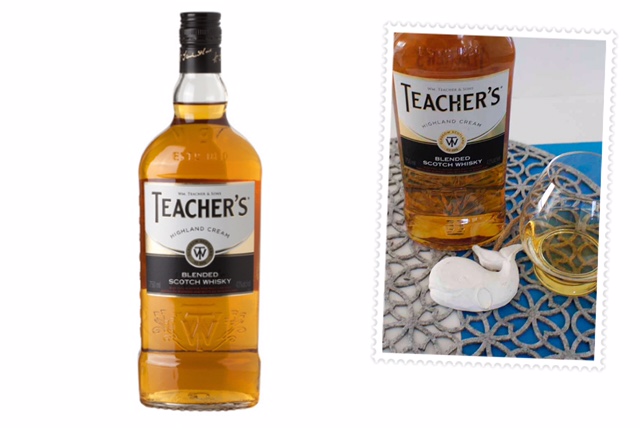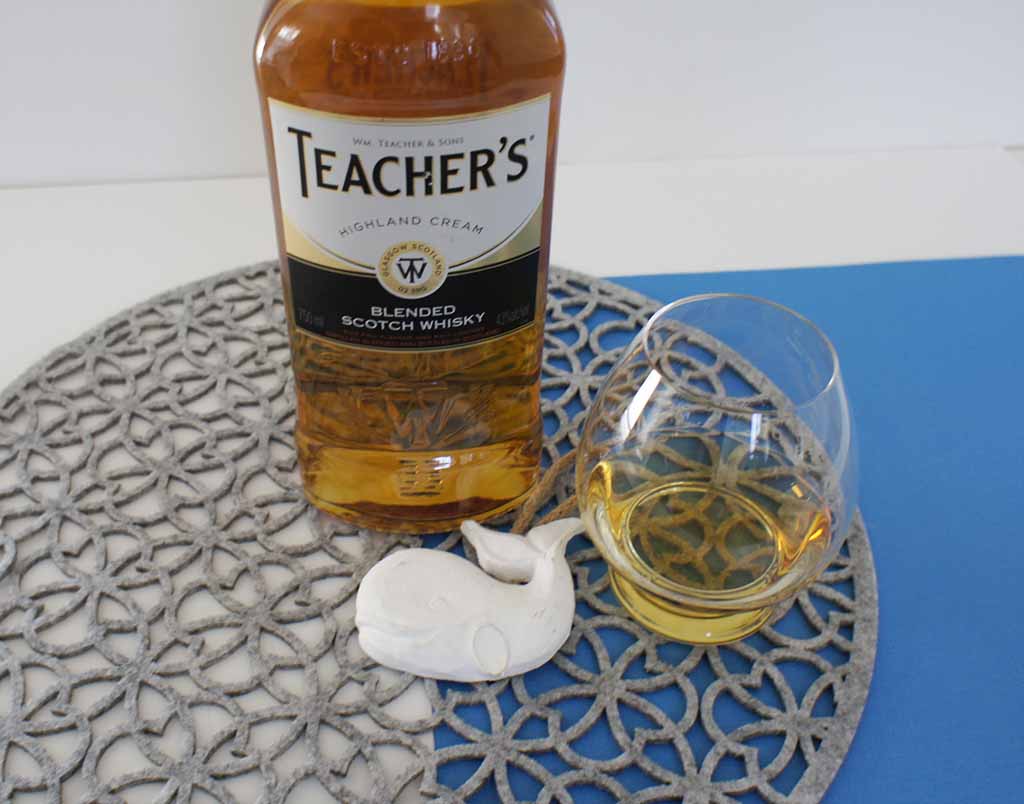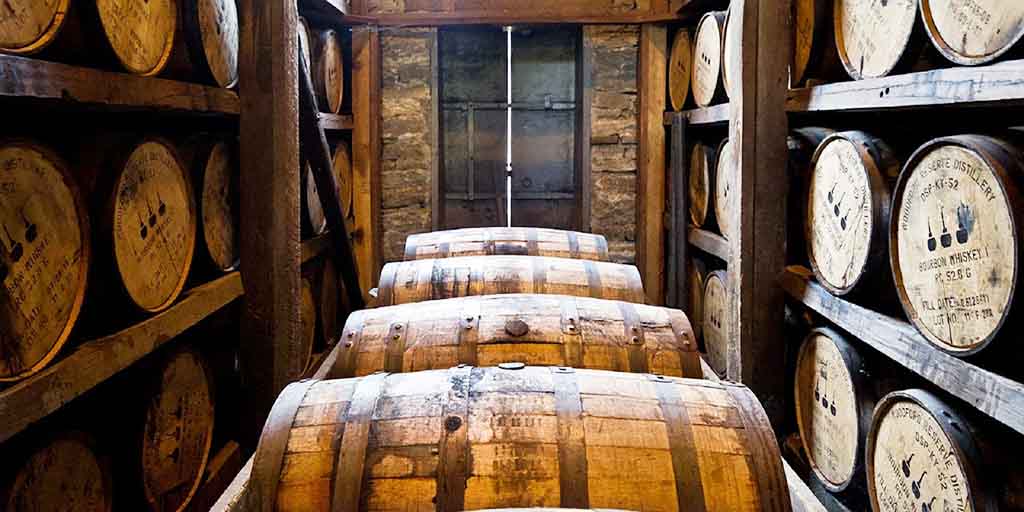 In this instalment of my ongoing series, I will compare two interesting bourbon releases: Jim Beam Double Oak vs Woodford Reserve Double Oaked bourbon whiskey.
In this instalment of my ongoing series, I will compare two interesting bourbon releases: Jim Beam Double Oak vs Woodford Reserve Double Oaked bourbon whiskey.
The aim is to delve into each whiskey’s unique strengths and distinctions. There might even be a clear winner. Previously, I’ve dissected the Elijah Craig 12 year old vs Evan Williams Single Barrel bourbon and pitted Jack Daniels Single Barrel against Woodford Reserve bourbon in a side-by-side showdown.
Today, it’s all about Jim Beam Double Oak vs Woodford Reserve Double Oaked.
Jim Beam Double Oak Bourbon Whiskey
Let’s start with Jim Beam’s offering. Jim Beam Double Oak bourbon whiskey is a more budget-friendly option than the Woodford Reserve Double Oak. This bourbon begins its journey as the standard Jim Beam White Label Kentucky Straight bourbon whiskey.
As bourbon tradition mandates, it undergoes a four-year ageing process in brand-new, charred American oak barrels. The extended maturation period in these fresh charred barrels imparts a heightened spiced oakiness and caramel sweetness to the liquid.
The mash bill for this release consists of approximately 77% corn, 13% rye, and 10% malted barley. Following this initial ageing, the bourbon is transferred to another set of new, charred American oak barrels for further ageing, adding complexity to its flavour profile.
Jim Beam Double Oak is presented in premium packaging featuring embossed glass and textured labelling. It is part of the Beam Suntory portfolio.
Woodford Reserve Double Oaked Bourbon Whiskey
Now, let’s shift our focus to Woodford Reserve Double Oaked Bourbon. In 2017, I had the pleasure of attending an event featuring Jack Daniel’s & Woodford Reserve, where I had the opportunity to savour the Woodford Reserve Double Oaked bourbon.
Launched in 2012, this expression showcases a delightful interplay of creamy, toasted flavours reminiscent of Malva pudding, as my friend Emily noted.
This bourbon begins life much like the classic Woodford Reserve but takes a unique turn during ageing. After its initial maturation, it undergoes a secondary ageing process in brand-new barrels, which are heavily toasted and lightly charred.
The mashbill for the Double Oaked variant comprises 72% corn, 18% rye, and 10% malted barley. This secondary ageing imparts a sweet, oak character to the bourbon while enhancing its fruity, vanilla, and caramel notes. This expression marked the first new addition to the Woodford Reserve lineup in over 15 years.
Also Read: Jim Beam bourbon vs Jack Daniel’s whiskey
Jim Beam Double Oak vs Woodford Reserve Double Oaked Bourbon
| Jim Beam Double Oak | Woodford Reserve Double Oaked | |
|---|---|---|
| Type | Bourbon | Bourbon |
| ABV | 43% | 43.2% |
| Colour | Deep golden copper | Golden mahogany |
| Mash bill | 77% corn, 13% rye, 10% malted barley | 72% corn, 18% rye, 10% malted barley |
| Nose | Oak, vanilla bits of toffee sweetness, cinnamon. Not a very complex nose. | Malva pudding, apricot jam, cream, dark cherries, candied fruits, caramel, honey with hints of cinnamon. |
| Palate | Peppery oak, vanilla, brown sugar, toasted bread, hints of cherries and dry wood. Adding water softens the spiciness a bit, but does not bring the sweeter notes forward. | Honey, toasted oak and fruity spices. Vanilla, caramel with hints of dark chocolate cherries. Rich and smooth. Adding a few drops of water smoothes it out even more and brings a few more sweet notes to the front. |
| Finish | Overwhelmingly spicy and dry | Medium length with creamy cinnamon and honey. |
| My Rating | Very Good | Excellent |
| Comments | Dry, woody and overwhelmingly spicy. | Unpretentious and comfortable. It's beautifully smooth, easy on the palate with a warming gentle finish. |
| You will like it if you are looking for… | If you like a spicy dram, this Jim Beam Double Oak is the bottle for you | Smooth and sweet and just delicious! |
| Price | $24 | $60 |
| Pairs well with | Spicy Chicken, strong cheddar cheese, Grilled New York Strip Steak | Coconut Macaroons, Malva Pudding, dark chocolate, Parmesan Cheese, Roasted Lamb |
Now, the moment of truth – the comparison! Tasting these two double oak releases side by side is an eye-opener.
The Jim Beam bourbon is spicier when compared to the Woodford Reserve with a drying oak, vanilla and toasted bread notes. The spiciness in in the Jim Beam overwhelms many of the other notes.
The Woodford Reserve bourbon has a soft, inviting sweetness, beautifully counterbalanced by the spicy oak notes. It boasts a cinnamon, vanilla, chocolate cherry deliciousness and a creamy richness that make every sip a true delight.
I’ve found myself replacing that bottle once or twice already, and it’s easy to see why. When it comes down to it, Woodford Reserve gets my vote every single time.
Notably, there’s a substantial difference in price between them with the Jim Beam being more affordable. However, the Woodford Reserve bourbon whiskey reigns supreme when it comes to sheer indulgence.
So, there you have it – Jim Beam Double Oak vs Woodford Reserve Double Oaked bourbon whiskey. This showdown reveals distinct characteristics and a clear winner for those seeking a top-tier double oaked bourbon experience.
